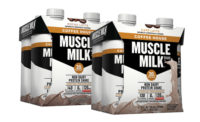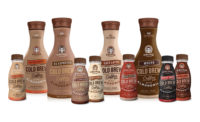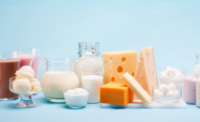When most people are sick, they typically seek out a licensed medical doctor to help cure what ails them. Yet, nearly 40% of adults in the U.S. use some form of complementary and alternative medicine therapy, including dietary supplements, massage, chiropractors, and Chinese and Ayurvedic medicine, according to the National Institute of Health (NIH), Bethesda, Md.
But what about when it comes to the foods and beverages we eat? Are traditional dairy products or dairy alternatives capturing the most basket rings?
While there’s no denying that dollar sales of traditional dairy, including top-selling milk, cheese, ice cream, sour cream, and cream cheese, dominate versus their plant-based alternative counterparts, research suggests that sales of dairy alternatives are slowly increasing. But growth also depends on whether the subcategory is niche or firmly “planted” in consumers’ minds and store shelves.
Dairy alternatives include milk (oat, almond, coconut, soy), yogurt, cheese, ice cream, sour cream, cream cheese, and spreads.
"Global Plant-based Food Market 2023-2028" a report from Dublin, Ireland-based Research and Markets, reports “impressive growth” for the industry, which is projected to grow at a compound annual growth rate (CAGR) of 10.95% from $41.06 billion in 2022 to exceed $75 billion by 2028.
“This trend mirrors the increasing popularity and adoption of veganism, which is driven by heightened awareness of ecological and ethical considerations,” the report states. “The market is witnessing rapid growth, with international restaurant chains such as Taco Bell, Chipotle, Jamba Juice, and Starbucks playing a significant role in driving increased consumption of plant-based options.”
“Plant-Based (PB) Dairy15 is up 8.1% in dollars while overall Dairy15 is up 11.2%. This is the first time in a long time where PB is trailing overall category growth. There are even some categories where PB is actually declining in dollars (Ice Cream -9.6%, Cheese -2.4%, Cream Cheese -5.3%, Rfg Dips -8.9% and Rfg Desserts -17.4%).”
— John Crawford, senior vice president of Client Insights-Dairy at Circana
Chicago-based market research firm Circana reported that overall sales of dairy alternatives only registered a little north of 1% last year. Yet, for the 52 weeks ending Aug. 13, albeit from a much smaller base, plant-based milks generated a 5.5% year-over-year (YoY) increase and dollar sales of $2.4 billion. No. 1 in the subcategory was almond milk with $1.5 billion in sales (1.1% increase), while oat, soy, and coconut had sales of $557,779,794, $171,600,275 and $90,744,303, respectively, with double-digit YoY growth of 17%, 11%, and 24%.
In contrast, dairy milk generated sales of $15.5 billion, a 2.4% YoY increase for the same timeframe, with refrigerated white milk amassing $13.8 billion (2.6% growth) and refrigerated flavored milks seeing sales of $1.7 billion, a 0.3-percentage growth.
Citing Innova Market Insights’ 2022 Global Trends in Almond Forms report, Charice Grace, manager of Trade and Marketing Stewardship for the Modesto, Calif.-based the Almond Board of California, highlights that the products using almond milk experienced a 15% CAGR.
Noting that the “Golden State” produces 80% of the world’s almonds and 100% of the United States commercial supply, Grace says that almond milk is a clear leader within all-natural plant-based milks, accounting for 59% of the clean-label, plant-based milk category.
A Datassential Consumer Omnibus Survey conducted from July 2021 found that three-in-four dairy milk alternative users in the U.S. consume almond milk monthly, she adds.
“Furthermore, between 2017-2021, almond milk is being used in non-dairy cheese (+93%), non-dairy ice cream and frozen yogurt (+13%), confectionery (+14%), and desserts and ice cream (+10%.),” Grace says. “North America leads other regions, being responsible for 35% of new product introductions with almond milk.”
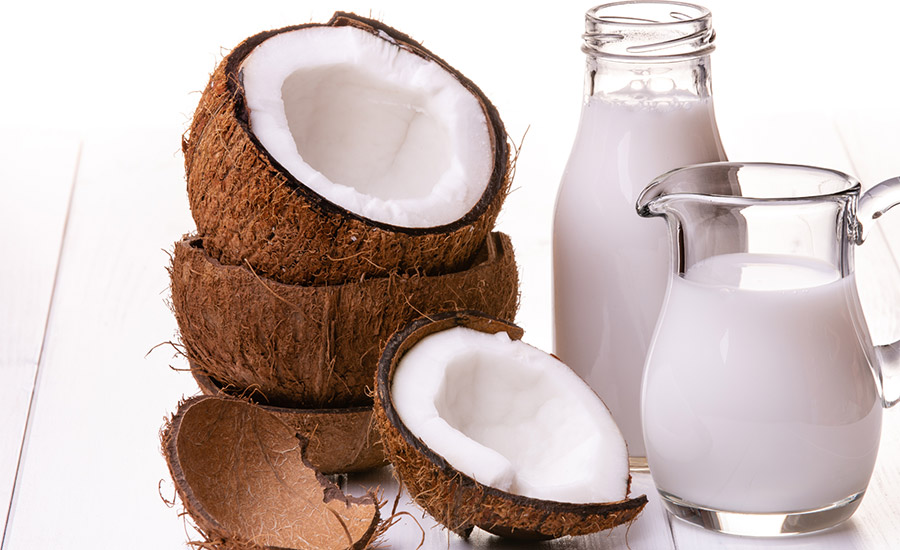
Opportunities arise
John Crawford, Circana’s senior vice president of Client Insights-Dairy, sums up opportunities and challenges within dairy and non-dairy categories.
“Plant-Based (PB) Dairy15 is up 8.1% in dollars while overall Dairy15 is up 11.2%. This is the first time in a long time where PB is trailing overall category growth. There are even some categories where PB is actually declining in dollars (Ice Cream -9.6%, Cheese -2.4%, Cream Cheese -5.3%, Rfg Dips -8.9% and Rfg Desserts -17.4%),” Crawford explains.
“Growing PB categories are Milk +8.5%, Cream/Creamers +24.1%, Yogurt +1.1%, Butter/Margarine +20.3%, Fz Novelties +3.9%, Rfg Whipped Toppings +25.0% and Sour Cream +0.8%.”
With many all-natural options, PB Milk comprised 60% of overall sales across the entire PB Dairy15. The most mature PB category, Milk, is still seeing sales growth of 8.5%, Crawford points out.
A less mature plant-based category, Cream/Creamers have been experiencing strong growth for several years, with the subcategory up 24.1% last year, he adds.
In Chicago-based SPINS’ MULO and natural enhanced channels for the 52 weeks ending Aug. 13, plant-based dairy is declining at 5.5% in unit sales, but growing 10% in dollar sales, reports Dan Buckstaff, chief marketing officer.
“Among these, the subcategories experiencing unit growth include creams and creamers (11.5%), RF oat milk (9.4%), SS coconut milk (40.8%) and SS oat milk (9.4%),” Buckstaff says. When looking at specific sales of dairy alternatives versus “true” dairy milks, “refrigerated plant-based milk is growing at 4.7% dollar sales and declining 7.5% in unit sales and traditional dairy milk is growing at 3% dollar sales and seeing declining unit sales of 2.4%,” he explains.
SPINS data also documented a few surprises. For instance, the frozen ice cream and novelties category, including dairy and non-dairy varieties, revealed $14.4 million in dollar sales at an upward trajectory of 7.3%. Traditional frozen ice cream and novelties had YoY dollar sales of $7.1 million (7.7% growth) and $6.4 million (7.8% growth), respectively, while plant-based frozen ice cream and frozen novelties saw YoY sales dip 8% and 0.3%, respectively, to more than $250,000 and $128,000 in dollar sales
Plant-based cheese also doesn’t measure up to traditional cheese in the $20.4 million combined category that registered 5.5% growth. Compared to traditional cheese, RFG plant-based cheese sales declined 9.3% ($27,449,316); RFG plant-based cheese shredded and grated decreased 2.7% ($111,482,530); and RFG plant-based sliced and snack generated dollar sales of $84,159,181, a decline of 7.5%.
According to the National Consumer Panel, 41% of U.S. households purchased plant-based milk in 2022, with a repeat purchase rate of 76%. Globally, dollar sales of plant-based milk increased 6% in 2022 to $19.1 billion, per London-based Euromonitor International, while sales by liters grew at a slightly lower rate of 3%.
Mathew Brady, lead marketing specialist at St. Louis-based IFPC, concurs that the growth of specific plant-based dairy alternatives like plant-based cheese, milks (soy, almond, etc.), ice cream, yogurt, and pea protein have been trending upwards.
“Plant-based milks, especially almond and soy milk, have gained popularity due to their similarity in taste to dairy milk. Plant-based ice creams and yogurts are also becoming more prevalent,” Brady says. “Market research suggests that sales of dairy alternatives are increasing, but the growth rate varies among different categories. Generally, the growth of dairy alternatives was notable, but they still represented a relatively small percentage of the overall dairy market.”
Yet, innovative plant-based cheeses that closely mimicked the taste and meltability of dairy cheese, as well as almond and oat milks that gained popularity due to their neutral flavors and versatile applications are making their mark in dairy alternatives.
For more than a decade, IFPC has been manufacturing stabilizer blends for plant-based milk alternatives. Under the Dairy House label, the Legacy TEX Botana line of blends is designed to stabilize plant-based beverages that are leading new product launches.
“Oat milk, almond milk [and] coconut milk are versatile enough to be used in almost every plant beverage imaginable,” Brady explains. “These stabilizer systems improve the stability, texture and overall quality of dairy alternatives.”
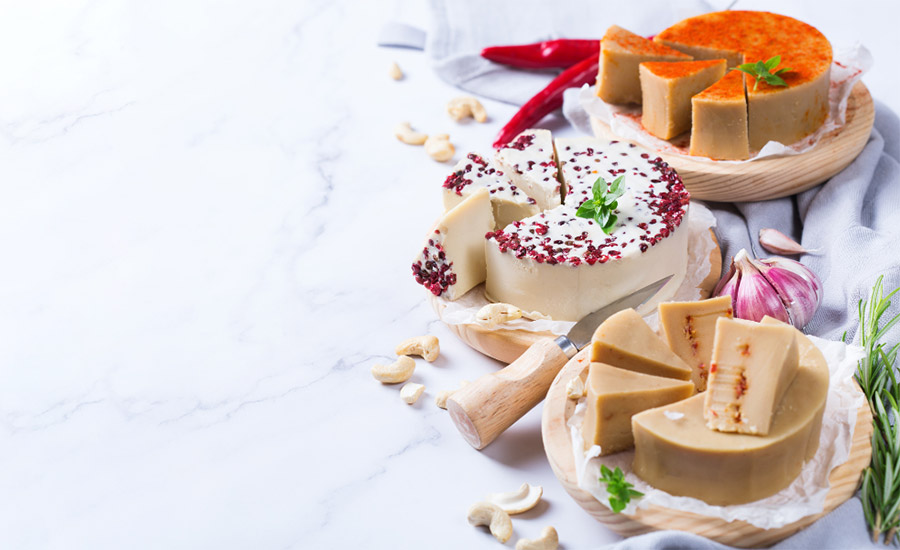
Inflationary pressures tell a nuanced story
Miri Eliyahu, senior research analyst at Euromonitor International, notes that because of increasing prices that are outpacing inflation, it’s not surprising that categories are experiencing growth. But she advises dairy and alternative dairy manufacturers to not just look at a brand’s value growth, but “to look at volume growth, this is a more nuanced story, with some categories increasing in volume, some stagnating and others declining,” she says.
Noting that dairy is much cheaper than plant-based alternatives on a price per volume basis, Circana’s Crawford notes “PB is 22% higher in Cheese, 55% higher in Milk, 38% higher in Cream/Creamer and 74% higher in Yogurt.”
Inflationary pressures tightened wallets and once adventurous flexitarian consumers are being more careful with their grocery spending, concurs Ellen Morgan, global research, development and acquisition (RD&A) senior director for Integrated Technology and Innovation at Kerry.
“Despite this, there are a variety plant-based dairy alternatives still in the market and new products continue to launch across a variety of categories such as milk alternatives, yogurts, cheese and frozen desserts. Plant-based frozen desserts continue to perform well in the market along with certain milk alternatives,” Morgan says.
Rooted in a strong dairy heritage and offering a wide portfolio of taste solutions, Beloit, Wis.-based Kerry has translated its dairy chemistry and dairy processing expertise into creating alternative dairy products that perform and taste like traditional dairy — a significant goal.
‘’We have a wide portfolio of taste solutions that can be used across the plant-based dairy category. Our masking, modulation and mouthfeel technologies create a clean base where the flavor can then be customized,” Morgan explains. “The combination of background dairy flavors, such as fatty, creamy dairy, followed by adding characterizing flavors like smoked gouda or French vanilla create products that deliver an authentic dairy profile and meet consumer’s taste expectations.”
For instance, to create dairy alternatives that perform and taste like real cheese, Kerry offers a Plant-Based Cheeze Toolbox with texturants solutions that can deliver a customized performance, such as creaminess and mouthfeel, or functionality such as melt and cheese chew.
For faster commercialization, Kerry’s Plant Based Toolbox, Puremul, allows dairy manufacturers more flexibility, clean-label capabilities and unique emulsifying properties, making “Purmul a go-to ingredient for dairy alternatives, especially in low-shear processing,” Morgan says.
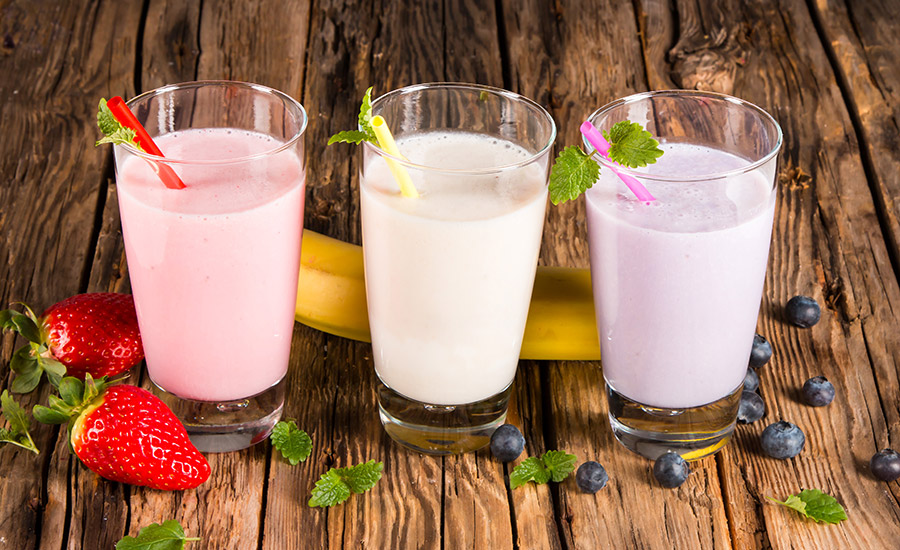
Dairy alternatives evolve with the times
The first generation of dairy alternative products was mostly soy-based and appealed to vegetarians looking for dairy-free options, notes Marina Boldrini, senior marketing manager, Americas for Atlanta-based CP Kelco.
“The second generation expanded into almond, oat, pea and coconut bases that attracted curious consumers who were open to trying something besides dairy,” Boldrini says. “Many manufacturers raced to get their products to market at the time, hoping to ‘ride the wave.’ They were more concerned with being first to market than perfecting a true counterpart to dairy.
“Now, in the third generation, product developers are delivering on taste, texture, price and nutrition. They have made major advances in blending protein content and consumers clearly have choices now,” she continues. “We have also seen great diversification with dairy alternatives that can take the place of milk, cream, ice cream, yogurt, and soft and hard cheeses. Development continues with new plant-based proteins, precision fermentation and hybrid blends.”
Now in retail store coolers, new plant-based products are making a splash in the dairy alternatives market, Euromonitor’s Eliyahu notes.
“Philadelphia’s plant-based cream cheese has made news with its recent launch in 2023. Even though it is too early to learn about the brand’s performance, it had made headlines as this is a signal to the larger industry that Kraft Heinz is investing in plant based in a serious manner, something that was uncommon until recently,” she explains. “Alongside this, is the launch of plant based babybel, another signal from a dairy leader of them striving to incorporate plant-based alternatives in their existing leading brands. Lastly is Silk’s Nextmilk, which is already showing a strong performance in retail.”
“Health benefits” remain a key growth driver for consumer interest in plant-based foods, explains Joe O’Neill, vice president of sales and business development for A&B Ingredients. “In fact, dairy alternatives, especially vegan milk, have captured a diverse crowd, including vegans, vegetarians, flexitarians, and health-conscious consumers,” O’Neill says. “Vegan milk is cholesterol-free, abundant in vitamin D and proteins, and provides more calcium than animal milk. However, there is potential for non-dairy brands to further simplify healthy eating for consumers by offering them delicious and nutritious products.”
Among the clean-label, functional ingredients that the Fairfield, N.J.-based company offers are innovations in probiotics, like PA5051, a plant-based probiotic that gives dairy formulators the chance to provide immune and digestive support to consumers. Plant proteins, including non-GMO pea proteins — Pisane — not only offers a high protein content of 86%, is rich in essential nutrients, but works as an emulsifier in non-dairy creamers and cheese spreads where texture and mouthfeel are important, O’Neill states.
Additionally, since reduced sodium and sugar products remain popular with health-conscious consumers, A&B offers a plethora of clean-label, functional ingredients, including lower sodium sea salt and dietary fiber, to help formulators address these nutritional trends.
When looking at plant-based milks, Euromonitor’s Eliyahu predicts that plant-based blends will rise to the top. “As for ice cream, while slower, there is still growth in plant-based ice cream, especially in novelties and brands that have a health halo attached to them like Kind bars,” she says.
Yet, data from Circana paints a different story of the “success” of plant-based refrigerated milk blends, which saw a 79% reduction in dollar sales to $86,133, while unit sales plummeted 85% to 16,375 for the 52 weeks ending Aug. 13.
Within the subcategory of all other milk, RFG kefir grew 19.2% and registered $131,912,678 in basket rings, while RFG milk substitutes, all other, generated dollar sales of $71,426,911, a nearly 50% YoY climb.
Nutrition-wise, plant-based products don’t contain the same nutrients as traditional dairy. But the team at iTi Tropicals — Don Giampetro, vice president of Innovation and Quality, Kyra Appleby, innovation technologist, and Andrew Carr, manager, research and development/innovation — suggest that significant inroads are boosting performance, nutrition and taste.
“At iTi Tropicals, coconut cream is our specialty. As far as altering the functionality and nutrition of coconut, we really cannot alter the product. With that being said, there are ways to utilize coconut cream with other ingredients to make acceptable and great tasting plant-based products,” iTI Tropicals’ experts state. They add that the flexitarian option of using dairy in conjunction with coconut helps lower dairy consumption and allows people to include plant-based options in a more complete plant and animal diet.
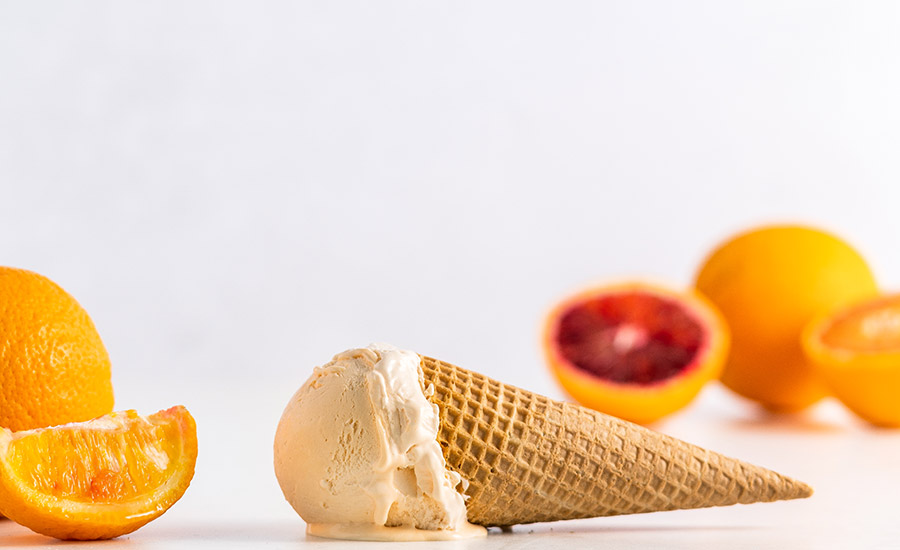
Lactose intolerance and plant-based connoisseurs
Consumers that are lactose intolerant also are turning to alternative dairy options for their own health and to prevent symptoms like bloating, diarrhea and gas. Almond milk is one solution that doesn’t contain lactose, or the “milk sugar” naturally found in the milk of mammals, and can help those who want to consume more plant-based foods or reduce their caloric or sugar intake.
“Many unsweetened almond milk varieties have fewer than 30-35 calories per 8-ounce serving and zero grams of sugar,” Grace relays. “Unsweetened almond milk also contains no cholesterol or saturated fat. The mildly sweet and nutty taste is also appealing to consumers.”
Alice Lee, technical marketing manager for GNT USA LLC, notes that consumers are increasingly exploring more indulgent dairy alternatives such as ice creams and yogurts. She points out that these products are seeing a significant uptick in innovation, with eye-catching colors and intense flavors.
“They appeal to health-conscious shoppers because they include natural, plant-based ingredients while also resonating with the younger consumers’ desire for playfulness, adventure and surprise,” Lee says.
The Dallas, N.C.-based company, creators of natural EXBERRY colors, suggests that plant-based colors made from fruit, vegetables and plants can improve the appearance of non-dairy ice cream, cheeses, milk drinks, yogurts, and more.
“For instance, carrot juice can provide the straw-yellow butter hue to dairy alternative spreads, and concentrates from raw materials such as spirulina, turmeric, and sweet potato juice concentrates can provide a range of attractive hues in non-dairy desserts,” Lee explains.
Additionally, the company’s new EXBERRY Shade Vivid Orange – OS, an oil-soluble vibrant orange color concentrate sourced from non-GMO paprika and produced without chemical solvents, is an “important breakthrough” for two reasons. First, it can be simply described as “paprika (color)” on the label and is an appealing alternative to paprika oleoresin, offering a vivid orange shade with a clean-label pedigree. Second, EXBERRY Shade Vivid Orange – OS has a high color intensity and applications within dairy-free cheeses, spreads, and components in dairy-free frozen treats and snacks.
There’s also been a surge in visually appealing plant-based butters and cheese spreads, Lee adds.
Health-forward options
Ingredient companies like Kerry are creating a world of sustainable nutrition, by building nutritional solutions that help maintain good health, while protecting people and the planet.
As a result, the ingredient company is seeing pockets of growth for different plant bases.
“In milk alternatives specifically, we’re seeing growth in oat milk, coconut milk and dairy alternative milk blends,” Morgan notes. “We can attribute the growth in oat and coconut to familiarity of those categories and how cemented they are in the milk alternative market in both retail and foodservice.
“Our taste solutions in masking, enhancement and authentic taste help us formulate the best products for consumers to balance nutrition by reducing sugar, fat or salt, while making products that taste like authentic dairy. We also have many technologies for proactive nutrition, like Prodiem, our complete plant based protein series, and BC30 probiotic and Wellmune, our clinically proven immune support.”
Euromonitor’s Eliyahu cites some plant-based dairy alternatives contributing to industry growth. “In plant-based cheese, Kite Hill is contributing a lot of growth in spreadable cheese, in hard cheeses, Violife is becoming a market leader in the past few years under the leadership of Upfield,” Eliyahu says. “Both brands invest a lot in product innovation and emphasize similar feel and experience to animal-based cheese in their offerings. In plant-based milk, there is significant growth in private label that is contributing to the marketplace growing, as well as Silk, Califia Farms and Planet Oat.”
Circana’s Crawford adds, “Lactose-free milk is also growing so there are alternatives to plant based in dairy.”
He also credits plant-based dairy manufacturers for “more new brand innovation in dairy coming from PB brands more than Dairy brands.” From a smaller dollar base, Silk Next Milk, Kind and So Delicious Ice Cream, Ripple Kids, Chobani Oatmilk and Chobani Creamer and Oatly Fz Novelties are all recent PB launches.
Primarily due to higher price, sales of plant-based products will level off, Crawford asserts, However, many experts suggest the opposite is true.
“Plant-based is going to continue to be desirable, especially for the values-oriented consumer who wants to buy products that are not only good for personal health but also good for the planet, people and animals,” says SPINS Buckstaff.
The Almond Board of California’s Grace points to McKinsey’s 2022 U.S. Dairy Consumer Survey that found that while dairy products still maintain significant market share, plant-based alternatives have gained traction in recent years.
“Approximately 45% of people who consume plant-based products plan to increase their consumption in the next three years. As technological improvements like fermentation unlock more of the sensory attributes that consumers desire, demand for dairy alternatives will continue to grow,” Grace concludes. “Generational shifts will also be a factor in growth for dairy alternatives, … as plant-based alternatives are highly appealing to younger generations like Gen Z. As younger consumers continue to define what markets are providing and gain purchasing power, we anticipate continued demand for dairy alternatives.”
.jpg?1699542015)

